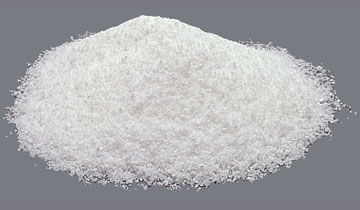What is Phentermine?
I had written in my earlier post about pyruvate, in which also used as weight loss supplement. In this post, I will describe the phentermine, in which its name has been used as a brand of weight loss pills, but the pills are not contained of phentermine.
Phentermine is an anorexigenic drug, in which can cause anorexia, or loss of appetite. Phentermine is a central nervous system stimulant and sympathomimetic with actions and uses similar to those of dextroamphetamine. Phentermine has been used to treat obesity, as an appetite suppressant. (DIP)
Phentermine is prescription only drug to treat obesity, in patients with body mass index (BMI) of ≥ 30 kg/m2, and having no underlying risk factors. Might also for fat category patients with BMI of ≥ 27 kg/m2, and having underlying risk factors, such as, hypertension, diabetes mellitus, hyperlipidemia.
Dosage for a pill consists of 37.5 mg of phentermine is once daily, before, or an hour after breakfast. Avoid taking in the evening, due to possible insomnia. Alternate dosage for a 18.75 mg pill, is twice daily, 30 minutes before meals, or an 8 mg of phentermine pill, 3 times daily, 30 minutes before meals. Some phentermine brands include, Adipex-P, Ionamin, Phentride, and Teramine. (Drugs.com)
Phentermine Side Effects
Phentermine may cause side effects. Symptoms include, dry mouth, unpleasant taste, diarrhea, constipation and vomiting may occur. You should also consult your doctor, if you experience any of the following symptoms:
- Blood pressure increasing.
- Heart palpitations, abnormal heart beats, too fast or too slow, which suddenly become more noticeable.
- Restlessness.
- Dizziness, a term that is often used to describe two different symptoms, light headedness and vertigo. Light headedness is a feeling like you might faint. While vertigo is a feeling that you are spinning, or moving, or that the the world is spinning around you.
- Tremors, unintentional trembling or shaking movements in one or more parts of your body.
- Insomnia, a common sleep disorder. You may have trouble falling asleep, staying asleep, or both. In result, you may have poor quality of sleep, and may not feel refreshed when you wake up.
- Shortness of breath, a breathing difficulty, which involves a sensation of difficult, or uncomfortable breathing, or a feeling of not getting enough air.
- Chest pain, discomfort or pain that you feel anywhere along the front of your body between your neck and upper abdomen.
- Swelling of the legs and ankles.
- Difficulty doing exercise that you have been able to do.
Phentermine may also cause other side effects. Consult your doctor if you have any unusual problems during your treatment with phentermine! (MedlinePlus)
What is Phen375?

Phen375
Phen375, a rapid weight loss supplement manufactured by RDK Global, a company based in Dallas, Texas. Phen375 is used the maximum daily dosage of phentermine as a brand name, without using any phentermine in its ingredients. In Phen375 website, it is said that:
Phen375 has alleviated every negative side effect associated with the original diet pills, the Phentermine drug, which is currently banned due to regulations.
This is a false statement. The U.S. FDA had already approved phentermine drug, more than 35 years ago, for a single drug, and short term obesity therapy. However, in July 8, 1997, FDA received reports of 33 cases of unusual abnormalities in mitral, aortic, and tricuspid heart valves, in women aged 30 to 72 years old, who had been taking fenfluramine, and phentermine for 1 month to 28 months. (Web Archive)
Two months later, in September 15, 1997,FDA announced the withdrawal of fenluramine and dexfenfluramin. But, The U.S. FDA was not requesting the withdrawal of phentermine, the third widely used medication for obesity. The FDA indicated that fenfluramine, and the chemically closely related dexfenfluramine, presented an unacceptable risk for patients who took them. (FDA)
What are Phen375 Ingredients?
In each 800 mg per tab of Phen375 consists several ingredients. Let's discuss them one by one!
Calcium Carbonate (149 mg)
Calcium carbonate, a dietary supplement used when the amount of calcium taken in the diet is not enough. Calcium is needed by the body for healthy bones, muscles, nervous system, and heart. Calcium carbonate is also used as an antacid to relieve heartburn, acid indigestion, and upset stomach.
Calcium carbonate side effects include, upset stomach, vomiting, stomach pain, belching, constipation, dry mouth, increased urination, loss of appetite, and metallic taste. Calcium carbonate is available with, or without a prescription. (MedlinePlus)
Chromium Picolinate (1 mg)
Chromium picolinate is an essential nutrient required for carbohydrate and lipid metabolism. Chromium picolinate supplementation has been reported to improve glucose metabolism, to improve serum lipid, and to reduce body fat.
In a randomized, double-blind, placebo controlled study among 9 men, and 10 women, aged 63 to 77 years old, were given daily either 1,000 μg (1 mg) of chromium picolinate, or a placebo for 8 weeks. The study resulted that there was no significant change in serum lipids, insulin sensitivity, or body composition, in the chromium group, compared with the placebo group.
Chromium picolinate supplementation alone does not appear to improve insulin sensitivity, serum lipids, or change body composition in non obese, healthy men and women of advanced age. (Amato P, et al. 2000)
However, treatment using chromium picolinate has been shown to improve mood, appetite, and glucose regulation. Recent clinical trial was demonstrated among 24 overweight adults with binge eating (the consumption of unusually large amounts of food with a sense of loss of control) disorder (BED).
In 6 months, all 24 overweight BED adults were randomly assigned to receive daily, either 1000 μg of chromium (8 adults), or 600 μg of chromium (9 adults), or a placebo (7 adults). The trial resulted that fasting glucose was significantly reduced in both chromium groups compared to the placebo group, and even though not significantly, greater reductions in binge frequency, weight, and symptoms of depression. (Brownley KA, et al. 2013)
L-carnitine L-tartrate (382 mg)
L-carnitine, an active form of carnitine, is a carrier molecule, that transports activated long chain fatty acids, from the cytosol to mitochondria, where fatty acids are oxidized, resulting in ATP production. L-tartrate, a salt of tartaric acid, is a potent antioxidant.
L-carnitine L-tartrate increases fatty acid oxidation, reduces purine catabolism and free radical formation, which may prevent exercise fatigue, muscle weakness, chemotherapy induced peripheral neuropathy, and hyperlipoproteinemia. (NCI)
Carnitine, a natural substance acquired mostly through the diet, is used by cells to process fats and produce energy. Primary carnitine deficiency, a condition that prevents the body from using certain fats for energy, particularly during periods without food (fasting), will lead to the risk of heart failure, liver problems, coma, and sudden death.
Primary carnitine deficiency usually appears during infancy, or early childhood. Signs and symptoms include encephalopathy (severe brain dysfunction), cardiomyopathy (a weakened and enlarged heart), confusion, vomiting, muscle weakness, and hypoglycemia (low blood sugar). In general population, primary carnitine deficiency incidence is approximately 1 in 100,000 newborns. In Japan, it is 1 in every 40,000 newborns. (GHR)
Citrus aurantium (125 mg)
Bitter orange (Citrus aurantium Linn.), or also known by other common names, such as, Seville orange, sour orange, and zhi shi, is native to eastern Africa and tropical Asia. Bitter orange has been used in traditional Chinese medicine and people in the Amazon rainforest to treat nausea, indigestion, and constipation. As folk medicine, bitter orange is used to treat heartburn, loss of appetite, nasal congestion, weight loss, and apply to the skin for fungal infections, such as, ringworm and athlete's foot.
Bitter orange contains an active ingredient of synephrine, in which often used in herbal medicine, as a stimulant and appetite suppressant. However, synephrine is similar to the main chemical in ephedra, in which currently had been banned by The U.S. FDA, because it raises blood pressure, and is linked to heart attacks and strokes. Although, it is unclear whether bitter orange has similar effects, there is little evidence, that bitter orange is safer to use than ephedra, and it may not be safe to use as a dietary supplement. (NCCAM)
Caffeine Powder (75 mg)
I had already described the benefits of caffeine in coffee, in my earlier post, Addicted to Coffee. Most people were unaware that dieatry supplements can contain caffeine, even if caffeine is not listed as an ingredient. Caffeine is added to dietary supplements to increase energy and suppress appetite. Commonly used herbal dietary supplement ingredients, such as guarana, are natural sources of caffeine.
In recent case report study, a previously healthy 38 years old women experienced blurring of vision and a new onset grand mal seizure. The women had a two month history of taking the dietary supplement, Zantrex - 3™. Zantrex - 3™ is advertised as a weight loss supplement, which may provide rapid weight loss, and extreme energy in one power packed pill
. After discontinuation of Zantrex - 3™, the women experienced no further seizure activity. (Pendleton M, et al. 2013)
Eurycoma longifolia (40 mg)
Tongkat ali (Eurycoma longifolia Jack), a flowering plant, is native to Indonesia, Malaysia, Thailand, Vietnam, and Laos. Other common names include, pasak bumi, penawar pahit, bitter medicine, penawar bias, bedara merah, bedara putih, lempedu pahit, payong ali, tongkat baginda, muntah bumi, petala bumi, bidara laut, babi kurus, Malaysian ginseng, and tho nan (Laos).
Tongkat ali roots are a traditional anti aging remedy, and supplements to improve libido, energy, sports performance and weight loss. Tongkat ali roots have also been proved scientifically to possess antimalarial, aphrodisiac, anti diabetic, antimicrobial and anti pyretic activities.
Recent study had managed to assess stress hormones, and mood state, among 32 men, and 31 women. The result indicated that daily supplementation with tongkat ali root extract improves stress hormone profile, and certain mood state parameters. The study suggested that tongkat ali may be an effective shield for the body from daily stress, as well as the stress of dieting, sleep deprivation, and exercise training. (Talbott SM, et al. 2013)
Capsicum annuum (20 mg)
Cayenne pepper (Capsicum annuum Linn.) contains capsaicin ((6E)-N-(4-Hydroxy-3-methoxybenzyl)-8-methyl-6-nonenamide), a lipophilic chemical, that can produce a strong burning sensation, or spiciness in the mouth. A study, which aimed to investigate, whether capsaicin assists weight maintenance, by limiting weight regain, after weight loss of five to ten %, was demonstrated among 91 moderately overweight subjects.
The 91 subjects were randomly assigned to receive daily, either 135 mg of capsaicin, or a placebo. After 3 months of weight maintenance, the result indicated that capsaicin treatment caused sustained fat oxidation during weight maintenance compared with placebo. However, capsaicin treatment has no limiting effect on 3 month weight regain after modest weight loss. (Lejeune MP, et al. 2003)
Disclaimer: This information should not be used to decide whether, or not to take Phentermine drugs, or buy Phen375. You must consult with your doctor before taking any weight loss supplements for your own safety!













.jpg)






